| [1] Frigg R. Locking Compression Plate (LCP). An osteosynthesis plate based on the Dynamic Compression Plate and the Point Contact Fixator (PC-Fix). Injury. 2001;32 Suppl 2:63-66.[2] Cao Q, Ma BT. Zhongguo Jiaoxing Waike Zazhi. 2008;16(12): 930-931. 曹清,马宝通.锁定加压钢板的临床应用[J].中国矫形外科杂志, 2008,16(12):930-931. [3] Zou J, Zhang Q. Zhonghua Chuangshang Guke Zazhi. 2009; 11(10):981-984. 邹剑,张长青.锁定钢板治疗四肢骨折的研究进展[J].中华创伤骨科杂志,2009,11(10):981-984. [4] Agarwala S, Shah SB. Staple versus locking compression plate fixation after lateral closing wedge high tibial osteotomy. J Orthop Surg (Hong Kong). 2008;16(3):303-307.[5] Hasenboehler E, Rikli D, Babst R. Locking compression plate with minimally invasive plate osteosynthesis in diaphyseal and distal tibial fracture: a retrospective study of 32 patients. Injury. 2007;38(3):365-370. [6] Sod GA, Mitchell CF, Hubert JD, et al. In vitro biomechanical comparison of locking compression plate fixation and limited-contact dynamic compression plate fixation of osteotomized equine third metacarpal bones. Vet Surg. 2008; 37(3):283-288.[7] Heiney JP, Barnett MD, Vrabec GA, et al. Distal femoral fixation: a biomechanical comparison of trigen retrograde intramedullary (i.m.) nail, dynamic condylar screw (DCS), and locking compression plate (LCP) condylar plate. J Trauma. 2009;66(2):443-449.[8] Aguila AZ, Manos JM, Orlansky AS, et al. In vitro biomechanical comparison of limited contat dynamic compression plate and locking compression plate. Vet Comp Orthop Traumatol. 2005;18(4):220-226.[9] Tang SL, Zhang WB, Yan HB, et al. Linchuang Guke Zazhi. 2009;12(2):165-168. 唐少龙,张文斌,颜海波,等.解剖型钢板与锁定加压钢板治疗胫骨下段粉碎性骨折比较[J].临床骨科杂志,2009,12(2):165-168. [10] Stepanovi? Z, Zivkovi? M, Vulovi? S, et al. High, open wedge tibial osteotomy: finite element analysis of five internal fixation modalities. Vojnosanit Pregl. 2011;68(10):867-871.[11] Saikia K, Bhuyan S, Bhattacharya T, et al. Internal fixation of fractures of both bones forearm: Comparison of locked compression and limited contact dynamic compression plate. Indian J Orthop. 2011;45(5):417-421.[12] Haaland PJ, Sjöström L, Devor M, et al. Appendicular fracture repair in dogs using the locking compression plate system: 47 cases. Vet Comp Orthop Traumatol. 2009;22(4):309-315. [13] Carpenter RS, Galuppo LD, Simpson EL, et al. Clinical evaluation of the locking compression plate for fetlock arthrodesis in six thoroughbred racehorses. Vet Surg. 2008; 37(3):263-268.[14] Levin SM, Nelson CO, Botts JD, et al. Biomechanical evaluation of volar locking plates for distal radius fractures. Hand (N Y). 2008;3(1):55-60. [15] Bae JH, Oh JK, Oh CW, et al. Technical difficulties of removal of locking screw after locking compression plating. Arch Orthop Trauma Surg. 2009;129(1):91-95.[16] Zhong H, Liu LH, Zhu ZM. Zhongguo Gu yu Guanjie Sunshang Zazhi. 2011(3):213-216. 钟华,刘立华,朱智敏.MIPPO技术下LCP锁定和加压固定后应力遮挡效应的有限元研究[J].中国骨与关节损伤杂志,2011(3): 213-216.[17] Hinterhofer C, Haider H, Apprich V, et al. Development of a twenty-one-component finite element distal hind limb model: stress and strain in bovine digit structures as a result of loading on different floorings. J Dairy Sci. 2009;92(3): 972-979.[18] Wong C, Mikkelsen P, Hansen LB, et al. Finite element analysis of tibial fractures. Dan Med Bull. 2010;57(5):A4148.[19] Wieding J, Souffrant R, Fritsche A, et al. Finite element analysis of osteosynthesis screw fixation in the bone stock: an appropriate method for automatic screw modelling. PLoS One. 2012;7(3):e33776. [20] Levine DG, Richardson DW. Clinical use of the locking compression plate (LCP) in horses: a retrospective study of 31 cases (2004-2006). Equine Vet J. 2007;39(5):401-406.[21] Blecha LD, Zambelli PY, Ramaniraka NA, et al. How plate positioning impacts the biomechanics of the open wedge tibial osteotomy; a finite element analysis. Comput Methods Biomech Biomed Engin. 2005;8(5):307-313.[22] Zhongguo Xuesheng Tizhi yu Jiankang Yanjiu Zu. Beijing: Higher Education Press. 2002. 中国学生体制与健康研究组.2000年中国学生体质与健康调研报告[M].北京:高等教育出版社,2002.[23] Lu CH, Yu B, Chen HQ, et al. Nanfang Yike Daxue Xuebao. 2010;30(10):2273-2276. 卢昌怀,余斌,陈辉强,等.正常步态下距骨三维有限元模型的建立及应力分析[J].南方医科大学学报,2010,30(10):2273-2276. [24] Lu CH. Guangzhou: Southern Medical University. 2011. 卢昌怀.距骨数值仿真模型的建立及有限元分析[D].广州:南方医科大学,2011.[25] Xiong Y, Zhao YF, Gong XS, et al. Chuangshang Waike Zazhi. 2009;11(2):155. 熊雁,赵玉峰,龚宪生,等.有限接触动力加压接骨板固定股骨干骨折的三维有限元分析[J].创伤外科杂志,2009,11(2):155. [26] MacLeod AR, Pankaj P, Simpson AH. Does screw-bone interface modelling matter in finite element analyses? J Biomech. 2012;45(9):1712-1716. [27] Xiong Y, Zhao YF, Gong XS, et al. Zhonghua Chuangshang Zazhi. 2009;25(3):245-248. 熊雁,赵玉峰,龚宪生,等.点接触锁定接骨板固定股骨干骨折的三维有限元分析[J].中华创伤杂志,2009,25(3):245-248. [28] Miyoshi S, Takahashi T, Ohtani M, et al. Analysis of the shape of the tibial tray in total knee arthroplasty using a three dimension finite element model. Clin Biomech (Bristol, Avon). 2002;17(7):521-525.[29] Zhang YG, Wang Y. Zhonghua Guke Zazhi. 2010;30(9): 892-898. 张银光,王岩.单柄和四桩设计的膝关节胫骨假体基座生物力学特点的三维有限元分析[J].中华骨科杂志,2010,30(9):892-898. [30] Giddings VL, Beaupré GS, Whalen RT, et al. Calcaneal loading during walking and running. Med Sci Sports Exerc. 2000;32(3):627-634.[31] Hu XJ, Li FW, Wang H, et al. Zhonghua Chuangshang Guke Zazhi. 2011;13(7):666-670. 胡新佳,林博文,王华,等.胫骨中段骨折钢板螺钉固定的有限元分析[J].中华创伤骨科杂志,2011,13(7):666-670. [32] Wall LB, Brodt MD, Silva MJ, et al. The effects of screw length on stability of simulated osteoporotic distal radius fractures fixed with volar locking plates. J Hand Surg Am. 2012;37(3): 446-453. [33] Brekelmans WA, Poort HW, Slooff TJ. A new method to analyse the mechanical behaviour of skeletal parts. Acta Orthop Scand. 1972;43(5):301-317.[34] Xu R, Wu Y, Jia KB, et al. Zhongguo Yixue Yingxiang Jishu. 2002;18(09):952-954. 徐瑞,吴勇,贾克斌,等.数字医学影影像与通信的重要标准-DICOM标准[J].中国医学影像技术,2002,18(09):952-954. |
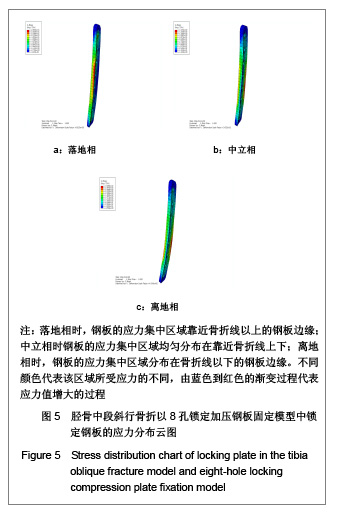
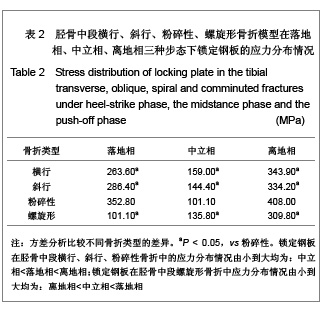
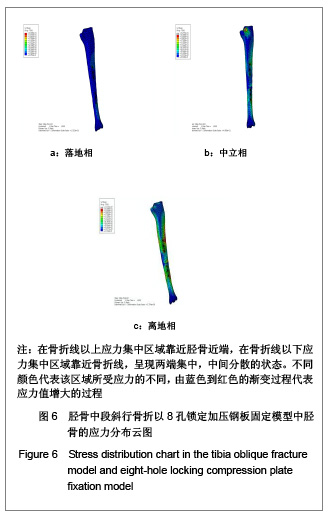
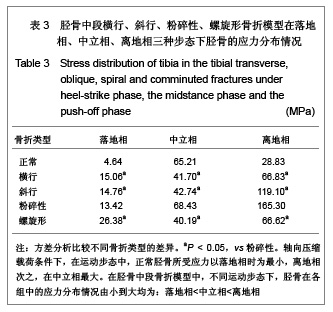
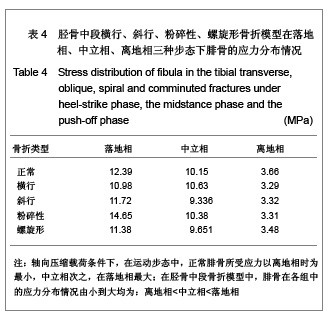
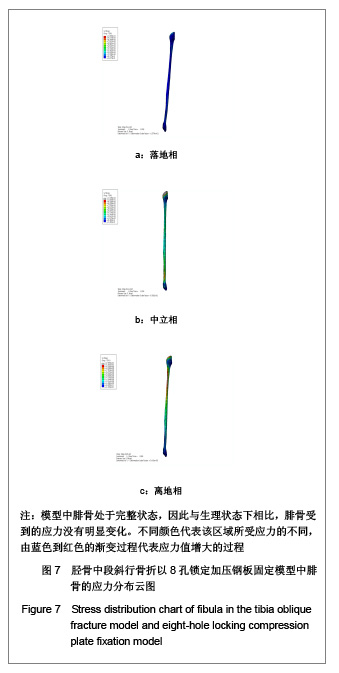
.jpg)



